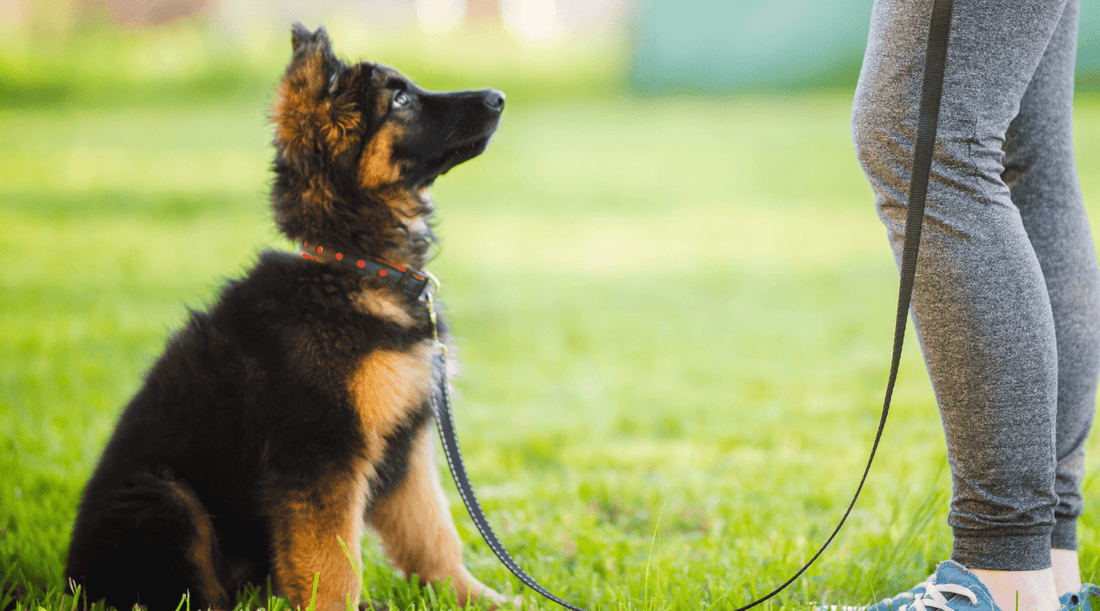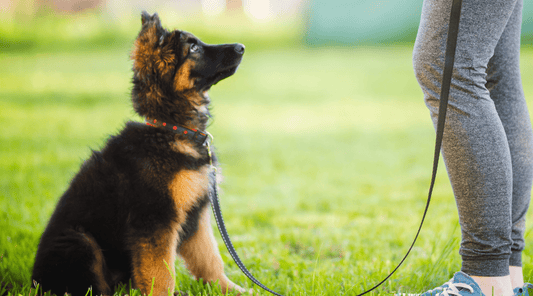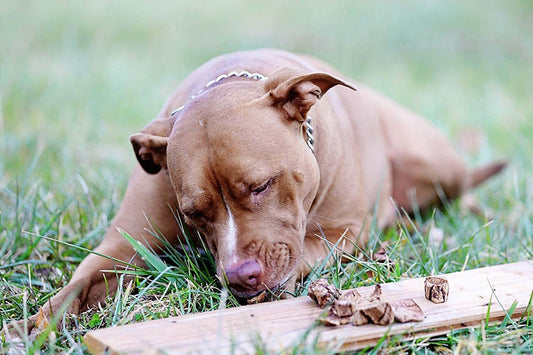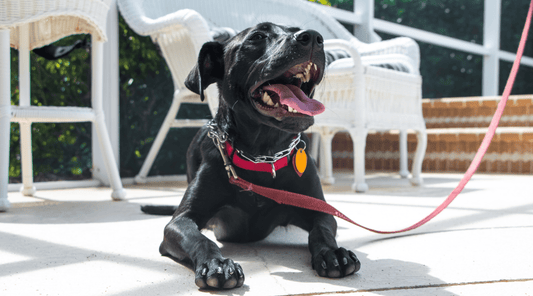Which Dog Breeds Are Easy to Train? Tales from the Park
Dawn Miller May 17, 20255 Minute ReadThe first time I met Max, the golden retriever from two streets over, he came running up to me at the park with a stick in his mouth, tail wagging like it had its own personality. His dog mom, Cheryl, puffed along behind him, laughing.
“He taught himself fetch.” she said. “I just handed him a stick one day. He wants you to play with us."
I looked at Pixie, my scrappy little terrier, who once took three weeks to understand that “sit” didn’t mean “spin in circles.” I gave her a treat just for not barking at Max. Progress is progress.
What Makes a Dog Easy to Train?
There are a few ingredients that tend to show up in those “dream” dogs everyone wants. And regardless of what people say, the dog breed is actually a fairly small factor. Instead, you'll find the easiest dogs to train are:
- Intelligent - After a few high-value treats, they begin to understand what you're trying to communicate when "sit" is followed by a treat.
- Have a naturally good temperament - They are eager learners. Or they love the rewards. You can work with both.
- High food motivation - It's 10X easier to train dogs with high-value treats. But some dogs prefer toys, praise, or cuddles. It takes longer for them to realize these are rewards.
Easiest Dog Breeds to Train
The American Kennel Club mentions that some breeds tend to be more trainable because they often have these characteristics. Among them:
- Poodles
- Border collies
- German Shepherds
- Golden Retrievers
- Dobermans
- Shetland Sheepdogs
Hardest Dog Breeds to Train
Then there are the hard dogs to train.
Now don't get me wrong. These breeds aren't unintelligent or intentionally defiant. On the contrary, they are all smart, independent working dogs that humans have trusted for generations to perform a task without constant direction from a human.
So, honestly, sometimes, they will suddenly remind you of a stubborn teenager.
Maybe I will. Maybe I won't.
Or
I'll do it later, Mom.
These often misunderstood breeds include:
- Chow Chows
- Huskies
- Bulldogs
- Basset Hounds
- Beagles
But even if your dog is one of these breeds, remember you can still train them with the proper techniques.
Smartest Dog Breeds
The smartest dogs aren’t always the easiest to train—but many of them are. Intelligence helps, but temperament and motivation matter just as much.
Some of the smartest dog breeds include:
- Poodles
- Shelties
- Dobermans
- Labradors (I knew Bruno was special!)
- Goldens
- German Shepherds
- Papillions
If you have one of these, you can probably teach them a basic skill in 30 seconds to a minute. They pay close attention to their humans' words, actions, facial expressions, and even emotions. And they learn fast.
Trainable Dogs Are Made, Not Born: Here's How
I once tried to teach Bruno “heel” with a pocket full of beef lung and misplaced confidence. He dragged me through the park like a sled dog at the Iditarod. We’re calling that Day Zero. But hey—we all start somewhere.
Whether you have a natural-born student or an independent working dog that gets that "stubborn dog" label, structure, patience, and high-value rewards make training faster and easier.
Here’s how to bring out the best in them:
1. Learn to Communicate with Your Dog
Experts believe dogs can learn around 120 unique human phrases. This is the basis for dog commands.
Sharing a language with your dog, even one that's only 120 dog commands, can open up a whole world of possibilities for your dog to feel engaged and bonded to you.
2. Use Positive Reinforcement Training
Positive reward training is backed by science. When you reward a behavior you want, you get more of it.
When you combine a command with a reward, you get a dog that performs an action on command.
I use high-value dog treats. These produce a dopamine response that helps dogs remember what actions earn treats.
Dogs don't just learn commands. The actions become productive habits that they perform even when there is no treat. And they feel good about it. Because when something becomes a healthy habit, it feels natural and rewarding.
3. Lean Into Their Strengths
If they’re food-motivated, use tasty rewards.
If they love toys, make fetch a reward. If they’re people-pleasers, praise them as if they just won a gold medal. Sometimes, when dogs don't seem to listen, it's because you just haven't tapped into what motivates them.
4. Reinforce Commands with Visuals
Use voice commands with hand signals to reinforce the idea visually and verbally. This helps dogs learn faster. And you never know when you might need to communicate quickly with your dog when someone's blasting a leaf blower.
5. Combine Rewards
Use treats, praise, and pets together, especially the first two. This allows you to alternate rewards once they learn a skill, so you don't spoil their dinner with endless treats.
Once your dog associates a cheerful "yes!" with a treat, the praise becomes a dopamine trigger without the treat.
6. Use a Clicker for More Advanced Skills
A clicker is a $5 device that makes a clicking sound. You can teach a dog that the clicking sound means that a treat is coming. This allows you to precisely mark the moment a dog performs a trick. So, even if it takes a few seconds to give them a treat, they learn which action earned the treat.
7. Teach Dog Skills in Order
Maybe you want to teach your dog to stay. But you have to teach them to sit first. Many tricks and more advanced behaviors build off these basic skills.
Or maybe your neighbor's dog knows how to wave, but your dog isn't getting it. That's because you have to teach "shake" first. All dog tricks and commands build on others.
8. Manage Distractible Behavior
Introduce a new habit into their routine. Give them a dog bone to chew on 2-3 times a week. Or right before training sessions. Gnawing is a mentally stimulating activity for a dog.
It calms nervousness, improves focus, and makes even harder-to-train dogs easy to train. No joke. It works.
I use K9 Connoisseur’s natural chews before we practice more advanced skills. These nutritious, single-ingredient beef marrow dog bones have my dogs ready to learn in just 10-15 minutes.
If your dog chews a bone instead of your flip-flop for once, that’s not just a win—it’s a parade-worthy moment. Celebrate it. Training is made up of a hundred little victories like that.
9. Be Consistent with Training
Use the same cues, gestures, and expectations every time. If “off” means “get off the couch,” don’t switch between “down,” “stop,” and “off” interchangeably. Dogs thrive on clear signals.
Final Thoughts
There’s no one-size-fits-all when it comes to training. Even the smartest dog breeds need the right conditions. Even the so-called “hardest dog breeds to train” can surprise you with consistency and the right rewards.
And let’s be real: the most important trait in any dog isn’t obedience—it’s the bond you build together.
Someone told me you're ready to do this. Dog training is fun and rewarding, especially when you're training with treats. So, I've got an excellent place for you to start. Sign up for the 7-Day Dog Training Challenge to begin building your dog's vocabulary with dog commands.
Available On:
Disclosure: This article may contain affiliate links, which means we may earn a small commission if you make a purchase through these links—at no extra cost to you. We only recommend products we trust and believe will benefit you and your K9.






